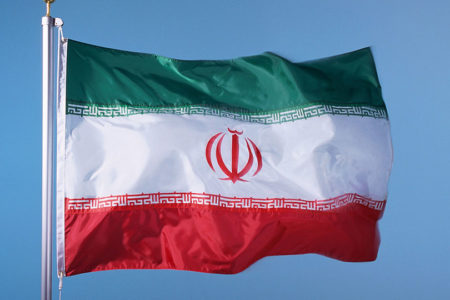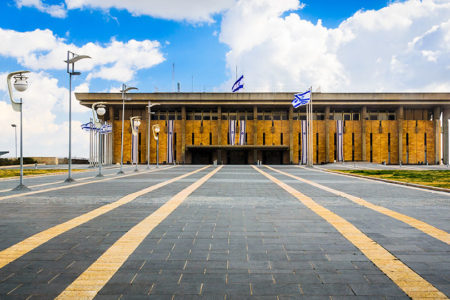The Shrinking State Of Israel
I have much pleasure in conveying to you, on behalf of His Majesty’s Government, the following declaration of sympathy with the Jewish Zionist aspirations which have been submitted to, and approved by the Cabinet. “His Majesty’s Government view with favour the establishment of a national home for the Jewish people, and will use their best endeavors to facilitate the achievement of this object…. (excerpt from the Balfour Declaration, November 2, 1917).
The Jewish people had traveled a tortuous road for the better part of two millennia before Baron Lord Rothschild received, on behalf of the Jewish people, the official letter sanctioning a national home for Jewish people in Palestine. For 400 years (1517–1917), the Muslim Ottoman Turks had controlled an immense area, including the whole of Palestine.
A distinction must be made between the Ottoman Turks and the Palestinians of today: The Ottomans were not Arabs. They were, however, Muslims, which makes the point that the basic conflict between Israel and its current antagonists is not a question of ethnic Arab claims to Palestine. It is, rather, an extension of the Islamic worldview toward Jews, Christians, and land claimed in the name of Allah.
The Ottoman Turks were defeated in World War I by the British, and Palestine subsequently came under British mandatory rule. Thus, the official decision by the British, ratified by the League of Nations, was to create a national home for Jews in Palestine. The mandate became effective in 1921. The extent of the territory designated for the Jewish state—their home—approximated the proportions specified in the Bible. It extended from the Mediterranean to Iraq, including all of what is now the country of Jordan.
The Shrinking State of Israel
Contrary to belief popularly propagated by anti-Semites, Arab apologists, and the majority of international news agencies, Israel has never fallen into the category of an expansionist state. In fact, from the days of the original land grant under the British Mandate, Jewry’s national homeland has continued to shrink rather than expand—a situation that continues to this day.
This shrinking began one year after the British Mandate went into effect. In 1922, the British arbitrarily partitioned the Jewish homeland into two separate entities. Everything east of the Jordan River, extending to the Iraqi desert, was ceded to an Arab sheik, the Emir Abdullah, the grandfather of the present ruler of Jordan, King Hussein. Thus, with the creation of the Palestinian state of Transjordan, Israel lost approximately 73 percent of the land that had been granted to the Jewish people.
By 1947, the borders of the Jewish national home had shrunk even further. In the aftermath of World War II and the decimation of European Jewry in the Holocaust, the matter of a Jewish state was thrown into the hands of the United Nations. Britain, through a succession of infamous “White Papers,” had virtually closed Palestine to Jews desperate to escape Hitler’s “final solution,” which, for Jewish people, meant death.
On November 29, 1947, the United Nations General Assembly decided to partition the remaining 27 percent of the mandated territory into three parcels.
- The Jewish state would control the Negev to the south, a strip along the coastline running from near Rehovot to the Haifa area, and a parcel adjacent to Lebanon, Syria, and Jordan, which included the Sea of Galilee.
- The Arab State was to be comprised of the Gaza Strip, the area now known as the West Bank, and a wedge of land in the north bordering Lebanon, between the Mediterranean and Israeli territory.
- The third entity was Jerusalem, which was to be designated as an international zone.
No Negotiations; No Recognition; No Peace—No Borders
A commonly held misconception is that Israel has violated the borders of Palestinian territory and, in effect, stolen Arab land. This unfortunate misinformation has caused monumental misunderstanding in attempts to negotiate a viable peace in the Middle East. From the standpoint of the Palestinians, and virtually the entire Arab world, there are no borders to be negotiated. In their view, the land, in its entirety, belongs to the Islamic people. Israel simply does not have a place on their map of the Middle East.
When the United Nations General Assembly voted on the U.N. partition plan, the Jews, their numbers and spirit ravaged by the Holocaust, complied with the resolution. As tiny as their thrice-torn piece of the homeland had become, they were willing to take anything that would promise a haven for their stricken people. The Arabs, however, were not willing to recognize Israel’s right to exist and rejected the plan. As far as the Arab and Islamic world was concerned, there was no legitimate Israel; therefore, there could be no talk of peace. The standard line of the Palestinians became, “No negotiations; no recognition; no peace.” Therefore, when, on May 14, 1948, the State of Israel was established, five Arab armies swept down on the fledgling state with a ferocious determination to destroy the state along with its Jews.
On the way to what the Arab leadership, and most of the world, felt was certain victory, Arab leaders counseled Arab residents within the disputed areas to leave their homes. In a few days, the residents were assured, Allah’s armies would have done with the pestiferous Jews, and they could return in triumph to reclaim their properties and enjoy the spoil of what the Jewish people had held.
Arab leaders woefully underestimated the courage, determination, and ingenuity of a people who had been pressed against the wall before. This time, the Jewish people decided that they would not kneel to die—they would stand to fight. Fight they did, and, against all odds, they won. This victory created an imposing problem for the Arabs: Their leaders had encouraged a massive exodus from what was now, in fact, Israel. The Arabs became, and were for another half century, refugees.
During the fighting, the Jordanians crossed the Jordan River to occupy most of what was to have become a separate Arab state. They also laid siege to the Old City of Jerusalem, expelled the Jewish population, and razed all the ancient Jewish synagogues. Meanwhile, the Egyptians, attacking from the south, overran the Gaza Strip.
When, early in 1949, it became apparent that the Arab armies could not drive Israel into the sea, as they had promised to do, armistice agreements were signed. Those documents were meaningless. The Egyptians made it abundantly clear that they did not regard this arrangement as either satisfactory or permanent. “The armistice demarcation line is not to be construed in any sense as a political or territorial boundary and is delineated without prejudice as to rights, claims and positions of either party…” (Armistice Agreement, Article V.2).
In 1950, Transjordan, which had become the Kingdom of Jordan, annexed the territory taken in the War of Independence and announced that it was reserving its rights regarding the territorial development. In other words, both Egypt and Jordan held the territories they had seized by weight of arms—a situation that would prevail until the Arab states tried again, in 1967, to destroy Israel. Once again they failed and, in the process, lost Jerusalem, the West Bank, Gaza Strip, Sinai, and Golan Heights to the Israel Defense Force.
Laying aside the rhetoric and irrational claims being made about essential territorial priorities, we can only conclude that by rejecting the reality of Israel and an Arab state in 1947, the Palestinians authored their own dilemma. They, therefore, have no basis for their claim that Israel sits on land inherently within the legitimate borders of Arab Palestine.
The Population Exchange
One of the central issues in the haggling over Palestinian rights is the claim of the “right of return” by Palestinians displaced in 1948 and 1967. Their arguments are buttressed by images in the Western media showing the deplorable conditions endured by the “refugees” in other Arab countries. It must be emphasized that no right-thinking person takes pleasure in the self-inflicted plight of these people. Certainly a solution must be found. But, with this in mind, let’s consider relevant details about this situation.
Much of the world has chosen to forget the hundreds of thousands of Jewish “refugees” from Arab countries who arrived practically penniless in a land holding out a promise of only hard work and a daily struggle for survival. The number of Arab refugees coming from Israel during the 1948 War of Independence has been placed at approximately 500,000. The number of Jews expelled from Arab countries has been placed at roughly the same figure. Many of these people left their homes and businesses with little more than what they wore on their backs. For example, in March 1950, the Iraqi government announced a “Special Law Authorizing the Emigration of Jews.” In order to qualify, Iraqi citizenship had to be renounced. Also, each person would be permitted to take no more than $16.00 out of the country—children were permitted even smaller amounts. At least 121,000 of the 130,000 Iraqi Jews chose to leave their possessions behind and leave the country.
It is extremely rare to hear any mention of the situation Jewish people encountered in exiting Arab countries because those who were forced out of Arab lands did not endure refugee status for an extended period of time. At great hardship to the country, Israel assimilated all sons and daughters of Abraham into the life of the nation as quickly as possible. So quickly, as a matter of fact, did that tiny nation—no larger than the state of New Jersey—settle within the ranks of its citizens so many people that the story endures as one of the great miracles of history.
For the Arabs, however, it was a far different story. Arab families whose leaders advised them to leave, along with the few who were forcibly evicted, did not receive the courtesy of a warm welcome from their kinsmen in other Arab countries. While they fled to Lebanon, Iraq, Syria, Jordan, Egypt, the West Bank, and the Gaza Strip, they found conditions in their host countries less than desirable. These unfortunate people immediately became pawns in a “maintain the problem” scenario that has lasted for decades. Although the oil-rich Arab nations had more than enough resources to settle their kinsmen into tolerable circumstances or assimilate them into their nations, they did not. Their failure was deliberate and, by any measurable standard, less than humane.
The thought behind this deplorable treatment was that if these displaced people were kept in squalid refugee camps, the problem would remain an issue in the international community. The Arab leaders were, of course, correct—the problem of what to do with these people has festered for decades. The tragedy is that Palestinian refugees were forced by their own leaders to live in pitiful circumstances. For callous radicals who pursued a “win at any price” strategy, poor and penned-up Palestinians—who were taught that Israel was the source of all evil—became perfect candidates to become terrorists and suicide bombers.
It is no secret that the oil-rich Arab nations have invested millions of dollars funding terrorists. When Hamas leader Sheik Yassin went on a fund-raising tour in the spring of 1998, it was reported that he raised $50 million to $300 million in support for Hamas from Arab Gulf states. He also received a pledge of $15 million a month from the Iranians. The stated purpose of the support was to aid Hamas in carrying out its terrorist designs against Israel and its allies. Meanwhile, their Muslim brethren in refugee camps live with inadequate housing and grinding poverty.
The Map Tells the Story
Israel has repeatedly done something virtually unprecedented in the history of this planet: They have given back land. Consider the facts.
This tiny nation has been attacked repeatedly—surviving five major wars—by those intent on driving Jews and their state into the sea. Each time, the aggressors were defeated by numerically inferior forces and lost territory in the process. After these defeats, there were loud outcries from the aggressors, who accused Israel of stealing their land and demanded that every square inch be returned. We would expect Israel to do what other nations have done over the centuries—simply say, “You lost it; we have it; don’t try it again.”
The Russians, who are now demanding that Israel return “occupied lands,” think differently about their own self-proclaimed property rights. Their attitude is the norm for those who succeed in defeating their enemies—especially those who strike first. In a commentary in Pravda (September 2, 1964), the Russians stated their case.
The borders of the State have become sanctified in the efforts of the settlers in the border villages and by the streams of blood which they have had to shed in their defence. A people which has been attacked and which defended itself and emerged victorious has the sacred right of establishing for itself such a final political settlement as would permit it to liquidate the sources of aggression…a people which has acquired its security with such heavy sacrifice will never agree to restore the old borders.
But, what’s good for the Russians, in their view, is not good for Jews in the Middle East. Israel has returned land to its attackers, only to have them, in one way or another, attack again.
After the 1967 war, Israel turned control of their venerated Temple Mount over to the Jordanians and made the sacred hill off limits to religious Jews who wished to establish a presence there. The state was, of course, concerned over the possibility of a holy war erupting in the Arab world. In the intervening years between 1967 and the present, however, Israel’s sensitivity and deference to Muslims, save for rare exceptions, have not been returned in kind.
During negotiations for peace with Egypt, Israel agreed to return the Sinai, taken in 1967, to Egypt. For an agreement for a peace that has been rather cold—but nonetheless a peace with promises—Israel removed settlements, factories, hotels, and health facilities. A major sacrifice involved turning over the Alma oil fields, discovered and developed by Israel, which were supplying half the nation’s energy needs. Israel gave up its early warning facilities, strategically important airfields, and direct control of its shipping lanes to and from Eilat, thus limiting military capability.
In 1998, the Netanyahu government announced that it was prepared to withdraw from the “security zone” in southern Lebanon. Lebanon, prompted by Syria, nixed the deal, saying they had no interest in making life safer for Israelis in northern Israel and that they would be prepared to talk only when Israel was willing to return the entire Golan to Syria. It would have to be a package deal.
Hafiz al-Assad, leader of Syria, is asking for everything before promising to give anything or even recognize Israel’s right to exist. This is the same Hafiz al-Assad who has occupied Lebanon, claimed it as part of Greater Syria, and harbored and trained a cadre of the world’s most violent terrorists. It is further reported that Assad’s brother controls the heroin trade from Lebanon’s Bekaa Valley, much of which finds its way to the streets of American towns and cities. At this writing, how much of the Golan will be returned is still an open question. There is a strong probability that if Syria becomes willing to negotiate seriously with Israel, at least a portion of the Golan Heights will be returned.
The Palestinians pose Israel’s greatest dilemma and potential threat. There are serious questions about a successor to Yasser Arafat. If—and it seems a distinct possibility—the Palestinians receive the mini-state Arafat pledged to announce in 1999, whoever follows him as leader of the Palestinian people will pose a serious problem for the Israelis.
Although Israel has stuck to the agreements forged under the Oslo Accords, Arafat and the Palestinians have been much less forthcoming. Their unwillingness to rescind elements in the Palestinian charter calling for the annihilation of Israel is a stark indicator of the fundamental attitude of a large and powerful segment of Israel’s “partners” in the peace process. Although many of the issues in the negotiations seem to be profoundly complicated, there is one simple indicator that reveals true intent at a level we all can understand.
At this writing, no map produced in the Arab/Muslim world includes the State of Israel. Not the map on the wall of Chairman Arafat’s office. Not the maps hanging on the walls of schools where Palestinian children are taught. Not the map issued by the Palestinian Tourism Department. Certainly not the maps on the barracks walls of any Arab or Muslim nations’ military installations. Every Arab map is marked only by the word Palestine. Israel simply does not exist in the minds of the overwhelming majority of the one billion Arab and Islamic people on the face of the earth.
Statements made repeatedly by Yasser Arafat and other Palestinian leaders make the ultimate goal very clear. It seems that the only people who do not take them seriously are Western political wishful thinkers, who naively insist on writing off bellicose speeches and statements as just rhetoric born out of to-be-expected “Palestinian rage.”
Consider a few of these “rage” induced declarations.
“The struggle will continue until all Palestine is liberated” (Yasser Arafat, Voice of Palestine Radio, November 1995).
“When we stopped the Intifada, we did not stop the Jihad [Islamic holy war] to establish Palestine with Jerusalem as our capital…We know only one word: Jihad, Jihad, Jihad…We are in a conflict with the Zionist movement, the Balfour Declaration, and all imperialist activity…” (Yasser Arafat in a speech near Bethlehem in October 1996).
“Whoever has occupied part of Palestine or Jerusalem faces Jihad [holy war] until Judgment Day. Our destiny is Jihad” (Sheik Muhammad Hussein, in a sermon from the Al-Aksa Mosque on the Temple Mount in Jerusalem, May 15, 1998).
Survival Through Strength
Israelis are asking two things for themselves from the peace process. First, there is the matter of security. That is, they want secure and defensible borders as guaranteed in U.N. resolutions. To achieve this, Israeli governments led by both the Likud and Labor parties have been willing to concede lands and withdraw from territories that many feel are vital to Israel’s future security. At the present stage of the negotiations, approximately 95 percent of Palestinians living in the West Bank and Gaza are under the control of the Palestinian Authority.
Second, there is the matter of reciprocity. That is, when Israel keeps a promise, the Palestinians should also adhere to what they have agreed to do. This has not been the case thus far. Therefore, the notion that the Israelis should keep making unilateral concessions in the hope that somewhere down the line the Palestinians will see the light and begin to respect agreements, is simply incorrect.
All parties attempting to contribute to a peaceful solution between Israel and its Palestinian neighbors should insist that these two vital elements be respected. Furthermore, in the hostile environment that will continue to be part and parcel of life in the Middle East, democratic nations—particularly the United States—must do all they can to assure that Israel remains strong.







